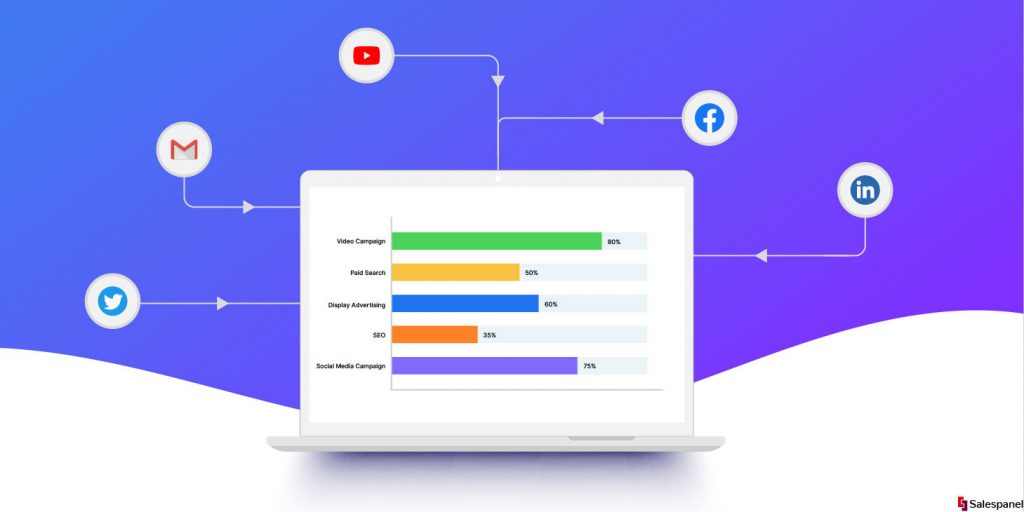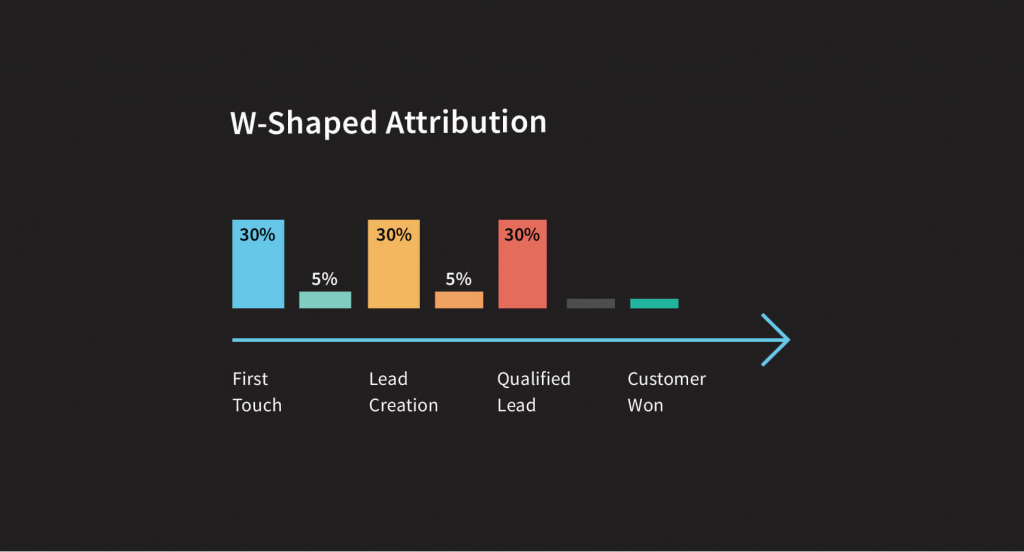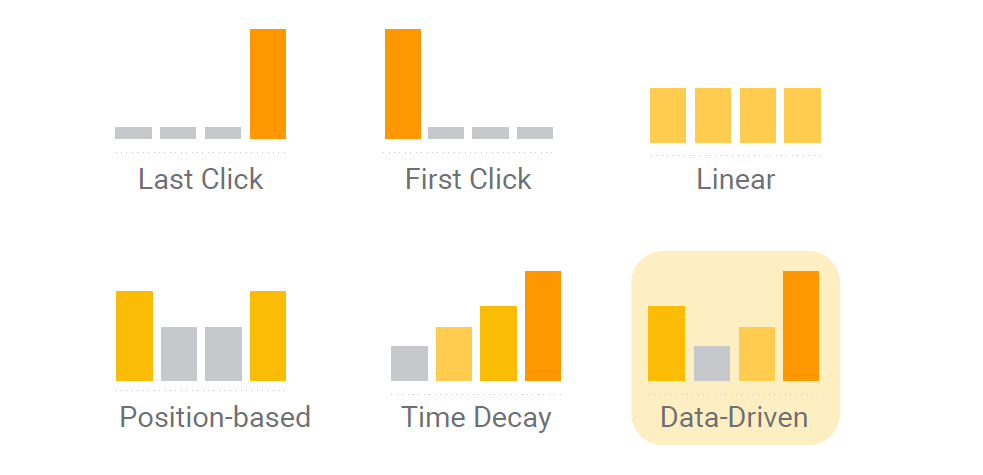Data-Driven Attribution: Strategies and Tools for 2023
Marketing attribution is a game changer for businesses that acquire customers online. Knowing how effective each marketing touchpoint in a customer’s journey is can be a complete game changer!
You can tweak and improve each channel and allocate more resources to the ones that outperform others. This helps you effectively acquire relevant customers and grow your revenue.
While promising enough it itself, digital marketing attribution relies on one thing as fuel – data. Attribution that relies on data to serve insights is called Data-driven Attribution.
Before we get into how data fuels attribution, let’s brush over different marketing attribution models!

Types of Marketing Attribution Models
Marketing attribution models are used to determine the contribution of each marketing channel or touchpoint to a conversion or sale. Here are some common marketing attribution models.
First-Touch Attribution
This model gives credit for a conversion or sale to the first touchpoint a customer encounters. It emphasizes the initial touchpoint’s role in capturing the customer’s attention and starting the conversion journey.

Last-Touch Attribution
In contrast to the first-touch model, last-touch attribution assigns all credit for a conversion or sale to the final touchpoint before the customer makes a purchase. This model focuses on the touchpoint that directly influenced the decision to buy.

Linear Attribution
The linear attribution model distributes equal credit to all touchpoints throughout the customer journey. It assumes that each touchpoint contributes equally to the conversion, regardless of its position in the customer’s path.

Time Decay Attribution
Time decay attribution assigns more weight to touchpoints that occur closer to the conversion. The model recognizes that the touchpoints closer to the purchase decision likely had a more significant impact on the customer’s choice.

Position-Based Attribution
Position-based or U-shaped attribution assigns 40% of the credit to the first and last touchpoints, with the remaining 20% distributed evenly among the touchpoints in between.
It recognizes the importance of both the initial and final touchpoints, while also acknowledging the role of touchpoints in the middle of the customer journey.

W-Shaped Attribution
The W-shaped model attributes credit to the first touchpoint, a middle touchpoint, and the last touchpoint. This model acknowledges that certain touchpoints, typically those that engage customers in the middle of their journey, play a significant role in influencing the decision to convert.

Image Source: Callrail
Custom Attribution
Custom attribution models are tailored to an organization’s specific needs and goals. They can incorporate various factors such as channel performance, customer behavior, and historical data to assign credit based on unique criteria defined by the business.
The decision of opting for a particular attribution model depends on the business’s objectives, industry, and the type of available data.
What is Data-driven Attribution Modeling?
Data-driven attribution modeling is an advanced approach to marketing attribution. It utilizes data analysis and statistical modeling techniques to determine the contribution of each marketing touchpoint in driving conversions or sales.
It goes beyond the simplistic rule-based attribution models and provides a more accurate and insightful understanding of the B2B customer journey.
In data-driven attribution modeling, large data sets are analyzed to identify patterns and relationships. These large data sets consist of customer interaction data, marketing touchpoints inputs, and conversion outcomes.
In some cases, the data is reviewed by marketers to draw outcomes. In other cases, for companies with larger datasets, ML algorithms and statistical models are utilized to attribute credit to the different touchpoints based on their influence on the customer’s decision-making process.
Both approaches take various factors and variables into account. These include the sequence of touchpoints, the time elapsed between touchpoints, the number of interactions, and the specific characteristics of each touchpoint.
By considering these factors, data-driven attribution modeling aims to assign appropriate credit to each touchpoint according to its actual impact on the conversion.
Data-driven attribution modeling provides several advantages over traditional attribution models. It allows marketers to gain a more accurate understanding of how different marketing channels and touchpoints contribute to conversions which further enables them to allocate resources effectively.
Sounds groundbreaking right? Then why isn’t everyone using Data-driven attribution modeling? Well, there are some challenges in implementing it.
Implementing data-driven attribution modeling requires access to comprehensive and high-quality data, advanced analytical capabilities, and expertise in statistical modeling and machine learning.

The Role of Data in Different Types of Attribution Modeling
To put it simply, attribution is impossible without data. Different types of data play different roles in different attribution models.
We shall go through each attribution model and see what role data plays there.
Data-driven First-Touch Attribution
Data is used to identify and capture the first touchpoint a customer encounters. It helps track and record the initial interaction, whether it’s through website visits, ad clicks, or other marketing activities. First touch is usually tracked through Referrer ID, GCLID (for Google Ads), and UTM parameters.
Data-driven Last-Touch Attribution
Data is used to identify and capture the final touchpoint before a conversion occurs. It helps track the last interaction that directly influenced the customer’s decision to make a purchase or complete a desired action.
Data-driven Linear Attribution
Data is utilized to track and record all touchpoints throughout the customer journey. It enables the analysis of each touchpoint’s contribution by providing a comprehensive view of customer interactions and their sequence.
Data-driven Time Decay Attribution
Data is employed to determine the time elapsed between touchpoints and the conversion event. It helps attribute more weight to touchpoints that occur closer to the conversion, reflecting their increased influence.
Position-Based (U-Shaped) Attribution
Data is essential for identifying the first, middle, and last touchpoints. It allows for the allocation of credit based on a predefined distribution, recognizing the importance of each position in the customer journey.
W-Shaped Attribution
Website tracking data is used to identify and capture the first touchpoint, middle touchpoint, and last touchpoint. It helps assign credit to these specific touchpoints based on their influence on the customer’s decision-making process.
Data-driven Attribution in Google Ads and Google Analytics 4
Nobody does raw data better than Google. So, it is important to cover how data-driven attribution works in both platforms:
Data-driven Attribution in Google Ads
Data Collection
Google Ads tracks various user interactions across different touchpoints, including ad clicks, impressions, website visits, conversions, and more. This data is collected and associated with unique user identifiers.
Conversion Modeling
Google Ads uses the collected data to build conversion models. These models analyze historical data and customer journeys to understand the relationship between different touchpoints and conversions.
The models consider factors such as the sequence of touchpoints, time lag, and the effectiveness of each touchpoint.
Attribution
Based on the conversion models, Google Ads attributes credit to the different touchpoints that played a role in driving conversions.
The attribution is dynamically assigned to each touchpoint and its influence on the conversion relative to other touchpoints in the customer journey is taken into account.
Data-driven Attribution in Google Analytics 4 (GA4)
Data Collection
GA4 tracks user interactions across multiple platforms and devices, including websites, apps, and offline touchpoints. It captures data on user engagement, events, conversions, and other relevant metrics.
Machine Learning Models
GA4 utilizes advanced machine learning algorithms to analyze the collected data. These models examine the user journey patterns, interactions, and conversion outcomes to understand the impact of different touchpoints on conversions.
Attribution Insights
Using the machine learning models, GA4 provides attribution insights by assigning credit to the various touchpoints in the customer journey.
It identifies the touchpoints that significantly contributed to conversions and provides a more accurate understanding of the customer’s path to conversion.
Enhanced Reporting
GA4 offers enhanced reporting capabilities to visualize and analyze the attributed credit for each touchpoint.
Advertisers can gain insights into the effectiveness of different marketing channels, campaigns, and user interactions. This information can guide decision-making and optimize marketing strategies.
Data-driven Attribution with Salespanel
Salespanel is a specialized customer journey tracking and attribution software for B2B businesses. It data-driven attribution to track and attribute the engagement of customers across multiple channels and domains in their journey. Integrating tracking capabilities for website, application, and email campaigns, and aggregating the data allows it to present a unified customer view.
Salespanel makes use of first-party website data for analytics, report generation, segmentation, and lead scoring. For every visitor, lead, or customer, Salespanel starts tracking as soon as the visitor lands on your website from marketing channels. It tracks the source of the visit and keeps tracking them until the visitor converts. When visitors sign up using a form, schedules a demo, or open a conversation using live chat, Salespanel automatically attaches the email address with the rest of the customer journey.
The platform’s extensive feature set, encompassing lead tracking, website visitor tracking, and campaign management, facilitates end-to-end customer journey tracking. Real-time insights into user behavior enable businesses to promptly respond to customer needs and preferences.
By leveraging the data-driven attribution capabilities of Salespanel, organizations can optimize their marketing efforts and tailor their strategies based on accurate and up-to-date insights. Learn more about Salespanel here.
Final Thoughts
Data is the new oil and leveraging data and customer insights for attribution will help you not only accurately understand marketing channels and activities that bring customers but also use information to generate high value customers.
Sell more, understand your customers’ journey for free!
Sales and Marketing teams spend millions of dollars to bring visitors to your website. But do you track your customer’s journey? Do you know who buys and why?
Around 8% of your website traffic will sign up on your lead forms. What happens to the other 92% of your traffic? Can you identify your visiting accounts? Can you engage and retarget your qualified visitors even if they are not identified?


